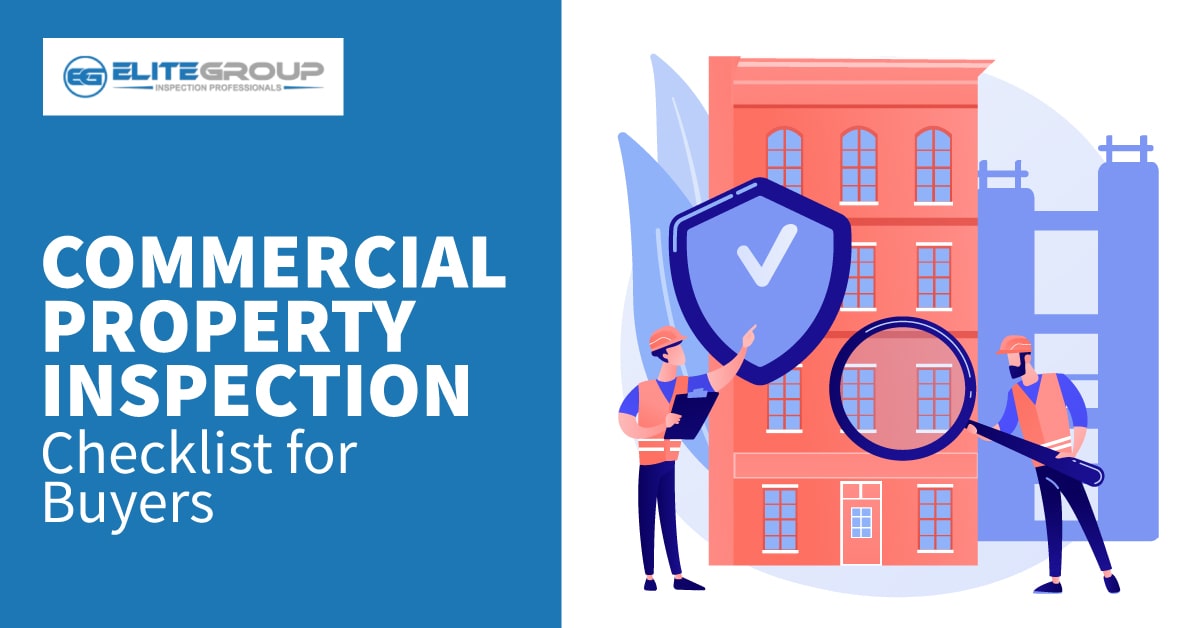Commercial Property Inspection Checklist for Buyers

Whether you are buying your commercial property for the first time or are a seasoned buyer, it is essential to know that buying a commercial property requires commercial property inspection. This inspection can help you understand your property thoroughly and gain insightful knowledge about it. One factor that makes such inspections easy and more comprehensive is the commercial property inspection checklist. A checklist can help you get a transparent view of your property, helping you identify the weaknesses, strengths, and potential risks before you decide to invest in your property. This blog will highlight some key areas on your commercial inspection checklist.
Exterior
A comprehensive exterior inspection is an essential step that should never be skipped on a commercial property inspection checklist. As the exterior acts as the first line of defense against numerous environmental conditions and potential risks, the main goal of this crucial process is to evaluate the structural integrity of the structure. Buyers can uncover any flaws that may affect the property’s long-term stability and worth by carefully inspecting the exterior of the building. This will give them essential insights into the building’s general condition.
The inspector inspects the critical components from the foundation and doors to the overall building envelope during the inspection. Any structure’s foundation is its most crucial component, so it must be closely inspected for any indication of settlement, cracking, or water damage. Walls may reveal clues concerning structural movement, water penetration, or poor maintenance.
In addition to adding to the building’s beauty, windows and doors are essential for security and energy efficiency. Assuring their good operation and insulation may prevent prospective buyers from paying expensive replacement costs or repairs. Assessing the entire building envelope is crucial since it affects energy efficiency, occupant comfort, and the property’s ability to endure weather extremes.
Interior
The interior inspection is incredibly important in a thorough commercial property inspection since it gives prospective purchasers a better knowledge of the property’s overall state and potential worth. Investors can learn vital information by exploring interior spaces that might not be obvious from an external look alone. This comprehensive inspection considers several factors, including the interior of the building’s operation, safety, and aesthetic appeal.
Important components, including the flooring, ceilings, lighting, and general layout, are thoroughly inspected during the interior inspection. The state of these components not only affects the property’s visual appeal but also offers significant indications regarding the level of upkeep and care it has gotten. The interior spaces may have problems, including water damage, mold, pest infestations, or structural issues, which can substantially influence the property’s market value and future operating expenses.
The inspection also examines the efficiency of the HVAC, electrical, plumbing, and electrical systems and the fire safety precautions. For the property’s everyday operations and the safety and well-being of its residents, it is essential to ensure these crucial systems are in good operating order.
Safety and Code Compliance
Any commercial property inspection must pay special attention to safety and code compliance because these factors guarantee a risk-free and secure investment. To ensure the safety of occupants and safeguard the neighborhood, local governments have created several safety rules and building norms that commercial properties must go by. Therefore, before making a sizable investment, prospective buyers must carefully evaluate the property’s adherence to these requirements, and this is a significant step in their commercial property inspection checklist.
During the inspection, the inspector examines various safety features, including emergency exits, signage, and accessibility for individuals with disabilities. To reduce the danger of fire-related mishaps, adequate fire protection equipment, such as fire alarms, extinguishers, and sprinklers, must be installed and working properly.
The property’s structural integrity is also assessed to withstand emergencies and natural disasters. This includes confirming the structure’s ability to support its weight, earthquake resistance, and other relevant safety elements.
Code compliance is equally essential because failure to do so may result in excessive fines, legal issues, and disruptions of corporate operations. The examination focuses on electrical, plumbing, HVAC, zoning, and environmental restrictions pertaining to building codes. Any violations or discrepancies might be utilized as negotiating points or a reason to reevaluate the acquisition as a whole.
Including safety and code compliance in the commercial inspection checklist gives buyers peace of mind that their investment complies with regulatory requirements and professional standards. A secure property safeguards residents’ lives and property while increasing the home’s worth and reputation, making it a longer-term profitable and reliable investment.
Environmental Concerns
Any commercial building inspection checklist must address environmental issues since they directly impact the health and well-being of the building’s occupants, the neighborhood, and the property’s long-term viability. Various factors can cause environmental dangers and contamination, including past or current industrial activity, improper waste disposal, chemical usage, or natural occurrences. It is crucial to recognize and evaluate these problems to make wise decisions and reduce potential dangers related to the property.
Environmental experts or consultants check the site during the inspection for any potential soil and groundwater contamination, issues with air quality, and hazardous materials like asbestos or lead-based paint. They also look into the property’s proximity to other potential sources of pollution, such as industrial facilities. This in-depth analysis helps identify hidden threats that might not be immediately obvious, protecting both the investment and the users of the property.
Addressing environmental issues also assures adherence to environmental rules and regulations, avoiding legal consequences. Additionally, it enables buyers to calculate the price of remediation and include it in their budget and negotiating strategy. An investment in commercial real estate can succeed or fail depending on how proactive it is with environmental concerns, as ignoring them can result in significant financial losses, reputational harm, and even legal challenges.
Buyers exhibit due diligence in investing by including environmental concerns on the commercial property building inspection checklist. It enables them to make more responsible decisions, reduce risks, and make their community and area safer and more sustainable.
Pest and Termite Inspection: Identifying Infestations and Damage
It is essential to include pest and termite inspection as a key element on the commercial property inspection checklist to protect the investment and guarantee the structural integrity of the building. Because they can cause significant damage that might go undetected without careful inspection, termites and other pests pose serious hazards to the building’s general health.
The qualified inspectors meticulously examine the property during the inspection for any indications of an infestation or any existing damage brought on by termites and pests. They look both the inside and the outside, paying particular attention to locations like basements, crawl spaces, attics, and places with wood or cellulose materials that are prone to infestations. Early detection of these problems can protect the building from dangers, stop further degradation, and lower repair expenses.
In addition to endangering a building’s structural integrity, pest, and termite infestations can put residents at risk for health problems, mainly if rodent- or insect-borne diseases exist. Additionally, a property’s marketability and rental or selling value may suffer if it has a history of pest issues, which may worry future tenants or buyers.
Buyers can make wise investment choices by incorporating a pest and termite inspection on their commercial property checklist. If pests or damage are found, buyers can negotiate repairs or ask the seller to take care of the problem before closing. Additionally, buyers should take proactive steps to prevent pest infestations in the future, assuring a secure and well-maintained property that meets their investment goals.
Discover excellence with Elite Commercial Inspections! Our expert team ensures meticulous property evaluations for confident investment decisions. Trust us to assess structural integrity, safety, and environmental concerns. Elevate your commercial real estate ventures – contact us now! Your success is our priority.





Leave A Comment